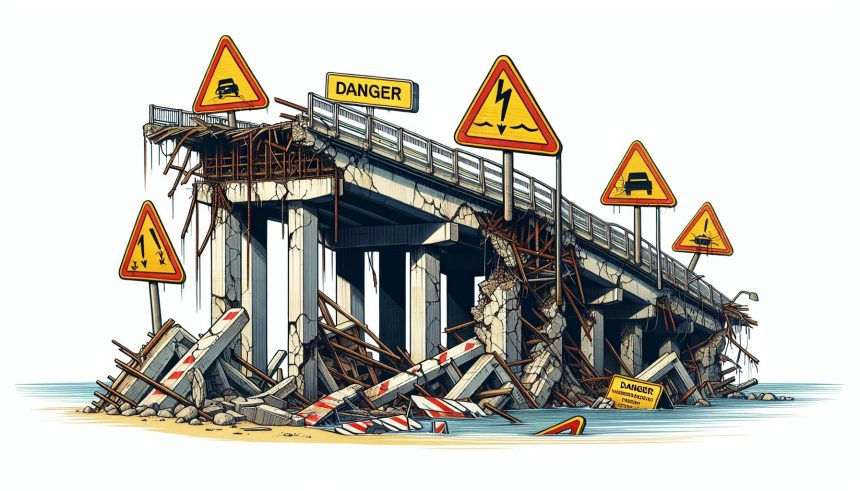The Washington Bridge in East Providence faced a significant outage due to a critical failure on March 8, 2024. This event caused severe traffic problems and impacted local businesses negatively, demonstrating the city’s economic reliance on its infrastructure.
The bridge closure led to gridlocked streets, impeding the normal flow of commerce and daily life. Major questions regarding the management and maintenance of the city’s public utilities have now been raised.
On another note, a large cargo vessel crashed into a bridge over the Patapsco River, resulting in six fatalities and disruption to over 30,000 daily commuters. The incident caused businesses to seek alternative logistic solutions and highlighted the necessity for improved safety measures in maritime operations.
Moreover, many bridges in the U.S., including the one on Interstate 695 in Baltimore, are in poor condition.
Critical infrastructure issues and consequences
Structural deterioration of critical components presents a significant risk of collapse due to heavy traffic, harsh environmental conditions, and natural disasters.
According to the National Bridge Inventory, over 42,400 of 621,000 bridges exceeding 20 feet in length are in a substandard condition, accommodating around 167 million vehicles daily. These figures stress the importance of an immediate, comprehensive infrastructural overhaul.
Between 1960 and 2015, collisions with ships or barges led to several bridge collapses resulting in 342 fatalities. Additionally, bridge disasters can also arise from structural deficiencies and failure in regular maintenance and inspection, as seen in the 2022 Pittsburgh bridge collapse and the 2007 Mississippi River bridge disaster. Such incidents underscore the necessity of improved infrastructure management and regular inspections.
Furthermore, inadequate or flawed design can also contribute to catastrophic bridge failures, like the 2018 Morandi Bridge collapse in Italy. Ultimately, the maintenance of these structures should be prioritized to prevent endangering lives and disrupting daily activities.
Robust infrastructure goes beyond economic development; it’s about ensuring the safety and well-being of every individual who relies on it. A proactive attitude towards regular evaluations and refurbishments can prevent further accidents and support societal growth and sustainability. In doing so, we strengthen the foundation of our success as a community.







